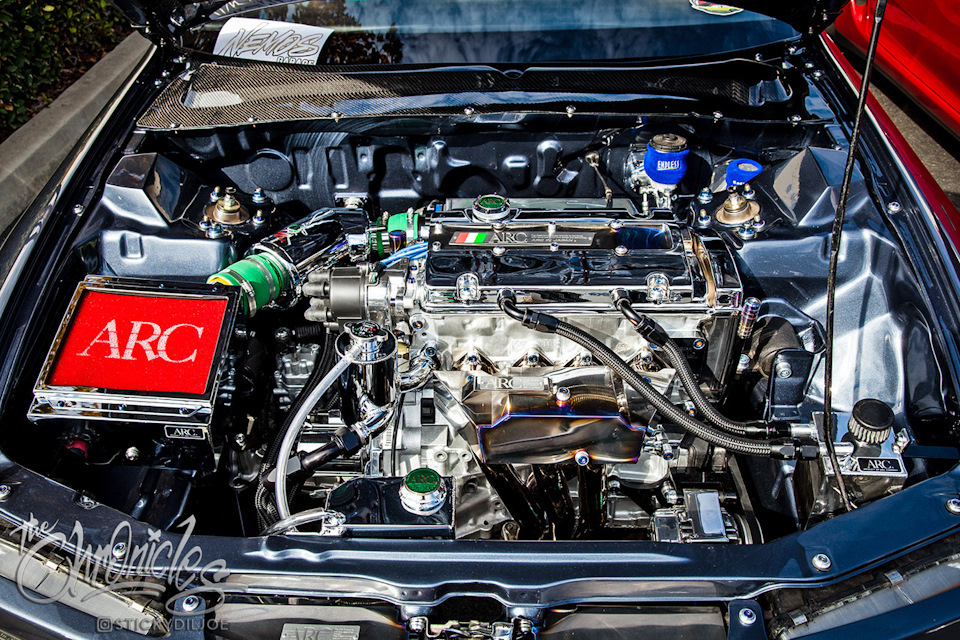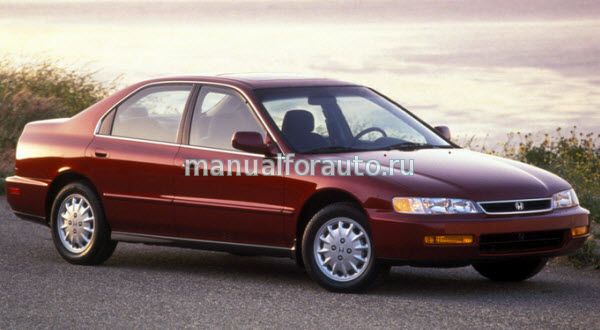1996 Accord Sedan Online Reference Owner’s Manual
Use these links (and links throughout this manual) to navigate through this reference.
For a printed owner’s manual, click on authorized manuals or go to www.helminc.com.
Owner’s Identification Form
Introduction ……………………………………………………………………………………………………………………….. i
A Few Words About Safety
Driver and Passenger Safety ……………………………………………………………………………………………….. 3
Proper use and care of your vehicle’s seat belts, and Supplemental Restraint System.
Instruments and Controls………………………………………………………………………………………………….. 33
Instrument panel indicator and gauge, and how to use dashboard and steering column controls.
Comfort and Convenience Features …………………………………………………………………………………. 73
How to operate the climate control system, the audio system, and other convenience features.
Before Driving…………………………………………………………………………………………………………………. 101
What gasoline to use, how to break -in your new vehicle, and how to load luggage and other cargo.
Driving ……………………………………………………………………………………………………………………………. 113
The proper way to start the engine, shift the transmission, and park, plus towing a trailer.
Maintenance……………………………………………………………………………………………………………………. 133
The Maintenance Schedule shows you when you need to take you r vehicle to the dealer.
Appearance Care……………………………………………………………………………………………………………… 195
Tips on cleaning and protecting your vehicle. Things to look for if your vehicle ever needs body repairs.
Taking Care of the Unexpected………………………………………………………………………………………… 203
This section covers several problems motorists sometimes experience, an d how to handle them.
Technical Information……………………………………………………………………………………………………… 227
ID numbers, dimensions, capacities, and technical information.
Warranty and Customer Relations (U.S. and Canada only)……………………………………………….. 241
A summary of the warranties covering your new Acura, and how to contact us.
Authorized Manuals (U.S. only)………………………………………………………………………………………… 247
How to order manuals and other technical literature.
Index……………………………………………..……………………………………………………………………………………. I
Gas Station Information
A summary of information you need when you pull up to the fuel pump.
Contents
………………………………………………………………………………………………….. ii
Introduction
Congratulations ! Your selection of a 1996 Honda Accord was a wise investment. It will give you years of driving
pleasure.
One of the best ways to enhance the enjoyment of your new Honda is to read this manual. In it, you will learn about
your vehicle’s many safety features, and how to operate its driving controls and convenience items. Afterwards, keep
this owner’s manual in your vehicle so you can refer to it at any time.
Several warranties protect your new Honda. Read the warranty booklet thoroughly so you understand the coverages
and are aware of your rights and responsibilities.
Maintaining your vehicle according to the schedules given in this manual helps to keep your driving trouble-free while
it preserves your investment. When your vehicle needs maintenance, keep in mind that your Honda dealer’s staff is
specially-trained in servicing the many systems unique to your Honda. Your Honda dealer is dedicated to your
satisfaction and will be pleased to answer any questions and concerns.
The Anniversary Edition (25th Anniversary Edition) model referred to in this manual is a DX model sold in the U.S.
with a special option package.
Safety Messages
Your safety and the safety of others is very important. We have provided
many important safety messages in this manual and on the vehicle. Please
read these messages carefully.
A safety message alerts you to potential hazards that could hurt you or
others. Each safety message is preceded by a safety alert symbol and
one of three words, DANGER, WARNING or CAUTION.
These mean:
You WILL be KILLED or
SERIOUSLY HURT if you don’t
follow instructions.
You CAN be KILLED or
SERIOUSLY HURT if you don’t
follow instructions.
You CAN be HURT if you don’t
follow instructions.
Each safety message tells you what the hazard is, what can happen and what
you can do to avoid or reduce injury.
You will also see another important
symbol:
NOTICE
Your Honda or other property can be
damaged if you don’t follow instruc-
tions.
The purpose of these messages is to
help prevent damage to your vehicle,
other property, or the environment.
Driver and Passenger Safety
This section gives you important
information about occupant protection. It shows how to use seat belts
properly. It explains the Supplemental Restraint System. And it
gives useful information about how
to protect infants and children in
your car.
Your Occupant Protection System.. 4
The Seat Belt System
and How It Works…………………. 5
Why Wear Seat Belts……………….. 5
Important Safety Reminders…….. 5
Seat Belt System Components….. 6
Lap/Shoulder Belt……………………. 6
Lap Belt……………………………………. 7
Wearing Seat Belts Properly…….. 7
Wearing a Lap/Shoulder Belt…… 8
Wearing the Lap Belt……………… 10
Advice for Pregnant Women…… 11
Seat Belt Maintenance……………. 11
Supplemental Restraint System….. 12
SRS Components……………………. 12
What Happens In a Crash……….. 13
Important Facts About
Airbags……………………………….. 14
How the Driver’s Airbag
Works………………………………….15
How the Passenger’s Airbag
Works…………………………………. 16
How the SRS Indicator Light
Works………………………………….17
System Service……………………….. 17
System Service Precautions……. 18
Additional Safety Information…….. 19
Seat-back Position…………………… 19
Head Restraint Position………….. 19
Door Locks…………………………….. 20
Storing Cargo Safely………………. 20
Driving with Pets……………………. 20
Child Safety……………………………….. 21
Where Should Children Sit?……. 21
Important Safety Reminders…… 22
General Guidelines
for Restraining Children
Under 18 kg (40 Ibs)…………… 23
Restraining
an Infant Who Weighs
Less Than 9 kg (20 Ibs)………. 23
Restraining
a Child Who Weighs Between
9 and 18 kg (20 and 40 Ibs)….. 24
Restraining a Child Who Weighs
Over 18 kg (40 Ibs)……………… 25
Securing a Child Seat with a
Lap/Shoulder Belt………………. 25
Using Child Restraints
with Tethers……………………….. 26
Storing a Child Seat………………… 27
Alcohol and Drugs……………………… 28
Carbon Monoxide Hazard………….. 29
Safety Labels……………………………… 30
Driver and Passenger Safety
Your Occupant Protection System
Your Honda is equipped with seat
belts and other features that work
together to protect you and your
passenger during a crash.
Seat belts are the most important
part of your occupant protection
system. When worn properly, seat
belts can reduce the chance of
serious injury or death in a crash.
For added protection during a severe
frontal collision, your Accord has a
Supplemental Restraint System
(SRS) with airbags for the driver and
a front seat passenger.
Driver and Passenger Safety
Two indicator lights are also part of
your safety system. One reminds you
to make sure you and your passengers wear seat belts. The other
alerts you to a possible problem with
your supplemental restraint system
(see page 17).
The seats, head restraints, and door
locks also play a role in occupant
safety. For example, reclining the
seat-back can decrease the effec-
tiveness of your seat belt. Head
restraints can help protect your neck
and head, especially during rear-end
impacts. Door locks help keep your
doors from being accidentally
opened during a crash.
To get the maximum protection from
your occupant protection system,
check the following before you drive
away:
Eveiyone in the car is wearing a
seat belt properly (see page 7).
Infants and small children are
properly secured in child safety
seats (see page 21).
All doors are closed and locked
(see page 20).
Seat-backs are upright and head
restraints are properly adjusted
(see pages 19 and 59).
There are no loose items that
could be thrown around and hurt
someone during a crash or sudden
stop (see page 20).
By following these guidelines, you
can reduce injuries to yourself and
your passengers in many crash
situations. Remember, however, that
no safety system can prevent all
injuries or deaths that can occur in
severe crashes.
The Seat Belt System and How It Works
Why Wear Seat Belts
Wearing seat belts, and wearing
them properly, is fundamental to
your safety and the safety of your
passengers.
During a crash or emergency stop,
seat belts can help keep you from
being thrown against the inside of
the car, against other occupants, or
out
of
the
car.
Of course, seat belts cannot com-
pletely protect you in every crash.
But, in most cases, seat belts reduce
your chance of serious injury. They
can even save your life. That is why
many states and all Canadian provinces require you to wear seat belts.
Not wearing a seat belt
increases the chance of being
killed or seriously hurt in a
crash.
Be sure you and your
passengers always wear seat
belts and wear them properly.
Important Safety Reminders
Seat belts are designed for adults
and larger children. All infants and
small children must be properly
restrained in child safety seats (see
page 21).
A pregnant woman needs to wear a
seat belt to protect herself and her
unborn child (see page 11).
Two people should never use the
same seat belt. If they do, they could
be very seriously injured in a crash.
Do not place the shoulder portion of
a lap/shoulder belt under your arm
or behind your back. This could
increase the chance of serious
injuries in a crash.
Do not put shoulder belt pads or
other accessories on seat belts. They
can reduce the effectiveness of the
belts and increase the chance of
injury.
Driver and Passenger Safety
The Seat Belt System and How It Works
Seat Belt System Components
Your Honda has seat belts in all five
seating positions. The front seats
and the outside positions of the rear
seat have lap/shoulder belts. The
center position of the rear seat has a
lap belt.
Your seat belt system also includes a
light on the instrument panel to
remind you to fasten your seat belt,
and to make sure your passengers
fasten theirs. This light comes on
when you turn on the ignition if you
have not fastened your seat belt. A
beeper also sounds for several
seconds (see page 36).
The following pages cover more
about the seat belt components and
how they work.
Driver and Passenger Safety
Lap/Shoulder Belt
SHOULDER
PORTION
LATCH
PLATE
BUCKLE
UPPER SEAT
BELT ANCHOR
To retractor
LAP
PORTION
This style of seat belt has a single
belt that goes over your shoulder,
across your chest, and across your
hips.
Each lap/shoulder belt has an
emergency locking retractor. In
normal driving, the retractor lets you
move freely in your seat while it
keeps some tension on the belt.
During a collision or sudden stop,
the retractor automatically locks the
belt to help restrain your body.
The lap/shoulder belt retractor in
each passenger seating position has
an additional locking mechanism
that is intended to secure a child seat
(see page 25). If the shoulder part of
the belt is pulled all the way out, this
mechanism will engage. The belt will
retract, but it will not allow the
passenger to move freely. If the belt
feels too tight, unlatch it, let it retract
fully, then pull it out as far as needed.
The Seat Belt System and How It Works
Lap Belt
BUCKLE
LATCH PLATE
The lap belt has one manuallyadjusted belt that fits across the hips.
It is similar to safety belts used in
airplanes.
Wearing Seat Belts Properly
You can increase the effectiveness of
your seat belts if you take a little
time to read the following pages and
make sure you know how to wear
seat belts properly.
Not wearing a seat belt
increases the chance of being
killed or seriously hurt in a
crash.
Be sure you and your
passengers always wear seat
belts and wear them properly.
Driver and Passenger Safety
The Seat Belt System and How It Works
Wearing a Lap/Shoulder Belt
Before putting on the seat belt, move
the driver’s seat as far back as is
practical while still allowing you to
maintain full control of the vehicle.
Make sure the seat-back is upright
(see page 19). The front seat
passenger should move the seat as
far back as possible.
Driver and Passenger Safety
1. Pull the latch plate across your
body and insert it into the buckle.
Tug on the belt to make sure the
latch is securely locked.
2. Check that the belt is not twisted.
3. Position the lap portion of the belt
as low as possible across your hips,
not across your stomach. This lets
your strong pelvic bones take the
force of a crash.
RELEASE
BUTTON
The Seat Belt System and How It Works
RELEASE
BUTTON
4. Pull up on the shoulder part of the
belt to remove any slack. Make
sure the belt goes over your
collarbone and across your chest.
5. If the belt crosses your neck, you
need to adjust the belt anchor
height or your seating position.
Front seats:
Adjust the belt anchor by squeezing the two buttons and sliding the
anchor downward (it has four positions) .
Rear seat:
Move toward the center of the
seat until the belt fits over your
collarbone.
To unlatch the seat belt, push the
red PRESS button on the buckle.
Guide the belt across your body to
the door pillar.
After you exit the vehicle, make sure
the seat belt is out of the way and
will not get closed in the door.
Driver and Passenger Safety
The Seat Belt System and How It Works
Wearing the Lap Belt
1. Pull the latch plate across your
hips and insert it into the buckle
marked CENTER.
If the belt is too short, hold the
latch plate at a right angle and pull
to extend the belt. Insert the latch
plate into the buckle.
Driver and Passenger Safety
2. Position the belt as low as possible
across your hips and pelvic bones,
not across your stomach. Pull the
loose end of the belt to adjust for a
snug but comfortable fit.
To unlatch the belt, push the red
PRESS button on the buckle.
The Seat Belt System and How It Works
Advice for Pregnant Women
Protecting the mother is the best
way to protect her unborn child.
Therefore, a pregnant woman should
wear a properly-positioned seat belt
whenever she drives or rides in a car.
If possible, use the lap/shoulder seat
belt, remembering to keep the lap
portion as low as possible (see page
8).
Each time you have a check-up, ask
your doctor if it’s okay for you to
drive and how you should position a
lap/shoulder seat belt.
Seat Belt Maintenance
For safety, you should check the
condition of your seat belts regularly.
Pull out each belt fully and look for
frays, cuts, burns, and wear. Check
that the latches work smoothly and
the lap/shoulder belts retract easily.
Any belt not in good condition or not
working properly should be replaced.
If a seat belt is worn during a crash,
have your dealer replace the belt and
inspect the anchors for damage.
For information on how to clean your
seat belts, see page 200.
Driver and Passenger Safety
Supplemental Restraint System
Your car is equipped with a Supplemental Restraint System (SRS) to
help protect the head and chest of
the driver and front seat passenger
during a severe frontal collision.
This system does not replace your seat
belts. It supplements, or adds to, the
protection offered by seat belts and
other occupant protection features.
Driver and Passenger Safety
Not wearing seat belts
increases the chance of serious
injury or death in a crash, even
if you have airbags.
Be sure you and your
passengers always wear seat
belts and wear them properly.
SRS Components
Your supplemental restraint system
includes:
One airbag in the steering wheel
for the driver and another in the
dashboard for the passenger.
Sensors that can detect a severe
frontal collision.
Supplemental Restraint System
A sophisticated electronic system
that continually monitors the
sensors, control unit, airbag
activators, and all related wiring
when the ignition is ON (II).
An indicator light on the instrument panel to alert you to a possible problem with the system.
Emergency backup power in case
your car’s electrical system is
disconnected in a crash.
What Happens In a Crash
If you ever have a severe frontal
collision, the sensors will detect
rapid deceleration and signal the
control unit to instantly inflate the
airbags.
During a crash, your seat belt will
help to restrain your lower body and
torso. The airbags will provide a
cushion to absorb crash energy and
help keep the head and chest of the
driver and front passenger from
striking the interior of the car.
After inflating, the airbags will
immediately deflate. The entire
process, from detection to deflation,
takes a fraction of a second. This
process occurs so quickly that you
may not hear the loud noise created
by the airbag inflators, or realize
what has happened.
After the crash, you may see what
looks like smoke. This is actually
powder from the airbag’s surface.
People with respiratory problems
may experience some temporary
discomfort from the chemicals used
by the airbag’s activators.
Driver and Passenger Safety
Supplemental Restraint System
Important Facts About Airbags
Airbags inflate only when needed; in
a severe frontal collision. A severe
collision would be similar to a crash
into a parked vehicle of similar size
at 25 mph (40 km/h). Airbags will
not inflate in a moderate frontal
collision, or during a rear impact,
side impact, or rollover — even if the
impact is severe.
Driver and Passenger Safety
Frontal collision range
Airbags inflate and deflate only once.
They cannot protect you during any
additional impacts that can occur
during a crash sequence.
Injuries, including fatal injuries, can
occur in a severe collision, even if
seat belts are worn properly and the
airbags inflate. No safety system can
provide complete protection in a
severe crash.
Just from viewing the vehicle
damage after a crash, it is very
difficult to accurately determine if
the airbags should or should not
have inflated. In some cases where
the airbag did not inflate, extensive
visible damage indicated that the car
absorbed much of the crash energy,
and the airbags were not needed. In
other cases, a severe jolt, such as an
impact to the undercarriage, may not
cause extensive body damage but
cause the airbags to inflate.
Supplemental Restraint System
How the Driver’s Airbag Works
If you ever have a severe frontal
collision, your airbag will instantly
inflate to help protect your head and
chest.
To do its job, the airbag inflates with
considerable force. So, while it can
reduce serious injuries and even save
your life, the airbag might cause
some facial abrasions or other
injuries. To reduce the possibility of
injury, you should always sit back as
far from the steering wheel as is
practical while still maintaining full
vehicle control.
After the bag completely inflates, it
immediately starts deflating so it
won’t interfere with your visibility,
ability to steer, or ability to operate
other controls. The total time for
inflation and deflation takes a
fraction of a second. You may not
even be aware that the airbag has
been fully inflated.
CONTINUED
Driver and Passenger Safety
Supplemental Restraint System
The driver’s airbag is stored in the
center of the steering wheel. For
your safety, do not attach any items
to the steering wheel. They could
interfere with the proper operation
of the airbag. Or, if the airbag
inflates, they could be propelled
inside the car and hurt someone.
Driver and Passenger Safety
How the Passenger’s Airbag
Works
If you ever have a severe frontal
collision, the passenger’s airbag will
inflate at the same time as the driver’s
airbag.
This airbag is quite large and inflates
with considerable force. It can
seriously hurt a front seat passenger
who is not in the proper position and
wearing the seat belt properly. Front
seat passengers should move the
seat as far back as practical and sit
well back in the seat.
We strongly recommend that you do
not put an infant seat in the front
passenger’s seat. If the airbag
inflates, it can hit the infant seat with
great force. The infant seat can be
dislodged or struck with enough
force to cause very serious injury to
the infant.
If a toddler seat is used in the front
passenger’s seat, the vehicle seat
should be moved as far back as
possible. If the passenger’s bag
inflates, it could seriously hurt a
toddler who is not in the proper
position or properly restrained.
Supplemental Restraint System
The passenger’s airbag is stored
near the top of the dashboard, under
a lid marked SRS. Do not place any
objects on top of this lid. If the airbag
inflates, those objects can be
propelled inside the car and possibly
hurt someone.
S R S
The purpose of the SRS light on your
instrument panel is to alert you of a
potential problem with your supplemental restraint system.
Have the system checked if:
How the SRS Indicator
Light Works
The light does not come on when
you turn the ignition ON (II).
The light stays on after the engine
starts.
The light comes on or flashes
while you are driving.
If you see any of these indications,
the airbag may not work when
needed in an accident. Take the
car to your dealer promptly for
diagnosis and service.
System Service
Your supplemental restraint system
is virtually maintenance-free. There
are no parts you can safely service.
You must have the system serviced
by an authorized Honda dealer:
If your airbags ever inflate, the
airbags and control unit must be
replaced. Do not try to remove or
discard the airbags by yourself.
This must be done by a Honda
dealer.
If the SRS indicator light alerts
you of a problem. Have the
supplemental restraint system
checked as soon as possible.
Otherwise, your airbags might not
inflate when you need them.
When the car is ten years old.
Have the dealer inspect the
system. The production date is on
the driver’s doorjamb for your
convenience.
Driver and Passenger Safety
Supplemental Restraint System
System Service Precautions
Do not modify your steering wheel
or any other part of the supplemental
restraint system. Modifications could
make the system ineffective.
Do not tamper with the system’s
components or wiring. This could
cause the airbags to inflate inadvertently, possibly injuring someone
very seriously.
Tell anyone who works on your car
that you have a supplemental
restraint system. Failure to follow
the procedures and precautions in
the official Honda service manual
could result in personal injury or
damage to the system.
Driver and Passenger Safety
Scrapping an entire car that has
uninflated airbags can be dangerous.
Get assistance from a Honda dealer
if your car must be scrapped.
If you sell your car, please be sure to
tell the new owner that the car has a
supplemental restraint system. Alert
them to the information and precautions in this part of the owner’s
manual.
Additional Safety Information
The seat belts and airbags are obvi-
ously important parts of your occupant protection system.
In addition, you should know that
sitting upright, adjusting the head
restraints properly, locking the doors,
and stowing things properly can also
increase your safety and possibly
even save your life.
Seat-back Position
The seat-backs should be in an
upright position for you and your
passengers to get the most protection from the seat belts.
If you recline a seat-back, you reduce
the protective capability of your seat
belt. The farther a seat-back is
reclined, the greater the risk that
you will slide under the belt in a
severe crash and be very seriously
injured.
For information on how to adjust the
seat-back, see page 56.
Head Restraint Position
Head restraints can help protect you
from whiplash and other injuries. For
the best protection, adjust the top of
the restraint so it is even with the
tops of your ears, or as high as possible. For instructions on adjusting the
head restraints, see page 59.
Driver and Passenger Safety
Additional Safety Information
Door Locks
It is not safe to leave your car doors
unlocked. A passenger, especially a
child, could open a door and acci-
dentally fall out. Also, there is a
greater chance of being thrown out
of the car during a crash when the
doors are not locked.
Storing Cargo Safely
Before you drive, make sure you
first securely store or tie down any
items that could be thrown around
the car and hurt someone, or
interfere with your ability to operate
the controls.
Do not put any items on top of the
rear shelf. They can block your view
and they could be thrown about the
car in a crash.
Driver and Passenger Safety
Be sure to keep compartment doors
closed when the car is moving. If a
front passenger hits the door of an
open glove box, for example, he
could injure his knees.
For information on loading cargo,
seepage 111.
Driving with Pets
Loose pets can be a hazard while you
are driving. An unrestrained pet can
interfere with your ability to drive
the car. In a crash or sudden stop,
loose pets or cages can be thrown
around inside the car and hurt you or
your passengers. It is also for their
safety that pets should be properly
restrained in your car.
The recommended way to restrain a
medium-sized or larger dog is with a
special traveling harness. This harness can be secured to the rear seat
with a seat belt. Travel harnesses are
available at pet stores.
A small dog, cat, or other small
animal will be safest in a pet carrier
with rigid sides. Choose a style that
allows you to secure it to the car’s
seat by routing a seat belt through
the carrier’s handle.
For further information, contact your
veterinarian or local animal protec-
tion society.
An infant or child who is not
properly restrained can be killed
or seriously injured in a crash.
Be sure any child too small for
seat belts is properly secured in
a child restraint.
Child Safety
Where Should Children Sit?
According to accident statistics,
children of all sizes and ages are
safer when they are properly
restrained in the rear seat rather
than the front seat.
We recommend that, whenever
possible, you secure your child’s
infant or toddler seat in the center
position of the rear seat with the lap
belt.
Children depend on adults to protect
them. To help make sure we do,
every state and Canadian province
has laws requiring infants and young
children to be properly restrained
whenever they ride in a car.
We strongly recommend that you do
not put an infant seat in the front
passenger’s seat. If the airbag
inflates, it can hit the infant seat with
great force. The infant seat can be
dislodged or struck with enough
force to cause very serious injury to
the infant.
CONTINUED
Driver and Passenger Safety
Child Safety
If a toddler seat is used in the front
passenger’s seat, the vehicle seat
should be moved as far back as
possible. If the passenger’s bag
inflates, it could seriously hurt a
toddler who is not in the proper
position or properly restrained.
We also recommend that any child
who is too large to use an infant or
toddler seat ride in one of the out-
side positions of the rear seat. The
child should then wear the lap/
shoulder belt properly for protection.
If the child is not large enough to
wear the lap/shoulder belt properly,
you should use a booster seat.
Driver and Passenger Safety
Important Safety Reminders
Never hold a baby or child on your
lap when riding in a car. If you are
wearing your seat belt, the violent
forces created during a crash will
tear the child from your arms. The
child could be seriously hurt or killed.
If you are holding a child and not
wearing a seat belt in a crash, you
could crush the child against the car’s
interior.
Never put your seat belt over
yourself and a child. During a crash,
the belt could press deep into the
child, causing serious internal
injuries.
Two children should never use the
same seat belt. If they do, they could
be very seriously injured in a crash.
If you are driving with small children
in the car, you should use the
childproof door locks to prevent
them from opening the rear doors
(see page 54).
For their safety, do not leave
children alone in your car without
adult supervision.
Child Safety
General Guidelines for
Restraining Children Under
18 kg (40 Ibs)
Use an approved child seat. The seat
must meet Federal Motor Vehicle
Safety Standard 213 (FMVSS-213) or
Canadian Motor Vehicle Safety
Standards. Look for the manufacturer’s statement of compliance on
the box and seat.
Use a seat of the right size. Make sure
the seat fits your child. Check the
seat manufacturer’s instructions and
labels for height and weight limits.
Secure the child seat to the car. All
approved child seats are designed to
be secured to the car seat by the lap
belt or the lap belt portion of a lap/
shoulder belt. A child whose seat is
not properly secured to the car can
be endangered in a crash.
To properly route a seat belt through
a child seat, follow the seat maker’s
instructions. If you use a lap/
shoulder belt, follow the instructions
on page 25.
Secure the child in the child seat. Make
sure the infant or child is firmly
secured to the child seat. Use the
straps provided, and carefully follow
the manufacturer’s instructions.
Restraining an Infant Who
Weighs
Less
Than 9 kg
(20 Ibs)
An infant up to about 9 kg (20 Ibs)
must be restrained in an infant seat
or a convertible seat designed for a
baby. Because infants must ride in a
reclining position, be sure the infant
seat always faces the REAR of the
car as shown.
CONTINUED
Driver and Passenger Safety
Child Safety
We recommend that, whenever
possible, you put the infant seat in
the center position of the rear seat
and secure it to the car with the lap
belt.
If you decide to put an infant seat in
any other seating position, make
sure the infant seat is held securely
by the locking mechanism of the
lap/shoulder belt (see page 25).
We strongly recommend that you do
not put an infant seat in the front
passenger’s seat. If the airbag
inflates, it can hit the infant seat with
great force. The infant seat can be
dislodged or struck with enough
force to cause very serious injury to
the infant.
Driver and Passenger Safety
Restraining a Child Who Weighs
Between 9 and 18 kg
(20 and 40 Ibs)
Toddler seats are designed for
children who weigh between 9 and
18
kg (20 and 40 Ibs).
The preferred place to put a toddler
seat is in the center position of the
rear seat. Use the car’s lap belt to
secure the seat to the car.
If you decide to put a toddler seat in
an outside seating position, make
sure the toddler seat is held securely
by the locking mechanism of the
lap/shoulder belt (see page 25).
If you are using a toddler seat in the
front passenger’s seat, move the
passenger’s seat as far back as
possible before installing the child
seat. If the passenger’s bag inflates,
it could seriously hurt a toddler who
is not in the proper position or
properly restrained.
Child Safety
Restraining a Child Who Weighs
Over 18 kg (40 Ibs)
We recommend that, whenever
possible, a child who has outgrown a
toddler seat ride in one of the
outside positions of the rear seat and
use a lap/shoulder belt.
Put the seat belt on your child and
check its fit. The shoulder belt
should fit over the collarbone and
across the chest. The lap belt should
sit low on your child’s hips, not
across the stomach.
If the shoulder belt crosses the neck,
have your child move toward the
center of the rear seat until the belt
fits properly. If the belt still crosses
the child’s neck, you should use a
booster seat.
Several styles of booster seats are
available. We recommend a design
that allows the child to use the car’s
lap/shoulder belt.
Whichever style you select, follow
the booster seat manufacturer’s
instructions.
Securing a Child Seat with a Lap/
Shoulder Belt
The lap/shoulder belt retractors in
the passenger seating positions have
a built-in locking mechanism
intended to secure a child seat. If
you are placing a child seat in one of
the outside seating positions, do the
following:
1. Place the child restraint in the
desired seating position. Route the
lap/shoulder belt through the seat
according to the seat manufacturer’s instructions.
2. Insert the latch plate into the
buckle. Make sure it is fully
latched.
3. Slowly pull the shoulder portion of
the belt out of the retractor until it
stops.
CONTINUED
Driver and Passenger Safety
Child Safety
4. Allow the belt to slowly feed back
into the retractor. You should hear
a clicking noise that indicates the
locking mechanism has engaged.
5. After the belt has retracted fully,
pull up on the shoulder portion to
remove any slack.
6. Push and pull on the child seat to
verify that it is held firmly in place.
If not, unlatch the seat belt, allow
it to retract fully, and repeat these
steps.
To unlatch the seat belt, push the
red PRESS button on the buckle.
Guide the belt across to the door
pillar. If the belt doesn’t retract
easily, pull it out and check for twists
or kinks.
Driver and Passenger Safety
Using Child Restraints with
Tethers
111 mm (4.4
310 mm (12.2 in)
in) 306
mm (12.0
in)
Your Honda has three attachment
points for tether-style child seat.
They are located on the rear shelf.
U.S. Models
Use the dimensions in the illustration to locate either of the outside
attachment points you want to use.
Cut a 22 mm (7/8 inch) diameter
hole in the rear shelf.
Canadian Models
Select the attachment point you want
to use and remove the plug with a
small flat-tipped screwdriver or
fingernail file.
Install the tether hardware that came
with the child seat.
Tighten to:
22 N.m (2.2 kgf.m , 16 lbf.ft)
If you are not sure how to install the
bracket, have it installed by your
Honda dealer.
If you need an anchor plate and
mounting hardware, you can obtain
them by writing to:
American Honda Motor Co., Inc.
Consumer Affairs
1919 Torrance Blvd.
Torrance, CA 90501-2746
Child Safety
Canadian Cars
TOOTHED WASHER
The anchor plate and mounting
hardware for a top tether are
supplied with the car. When installing, make sure the toothed washer is
on the bottom of the bolt.
The supplied anchor plate is
designed only for mounting a child
restraint. Do not use it for any other
purpose.
Storing a Child Seat
When you are not using an infant
seat or other child restraint, either
remove it or make sure it is properly
secured so it cannot be thrown
around the car during a crash.
Driver and Passenger Safety
Alcohol and Drugs
Driving a car requires your full attention and alertness. Traffic conditions change rapidly. You must be
able to react just as rapidly. Alcohol
or drugs directly affect your alertness and ability to react. Even pre-
scription and non-prescription medi-
cines can have this effect.
There are laws that deal with
drunken driving. These laws define
how much alcohol it takes in your
system to be legally «drunk.» However, your judgment and reaction
time get worse with every drink
even the first one.
Driver and Passenger Safety
—
The safest thing you can do is never
drink and drive. This can be done if
you plan ahead. If you know you are
going to be drinking, make plans to
ride with a friend who will not be
drinking.
What if you find that you’ve been
drinking and cannot get a ride from a
friend? Find alternative transportation. Call a taxi. Take a bus. Many
communities have transportation
services devoted to shuttling people
who have been drinking.
If you have no choice but to drive,
stop drinking and give yourself lots
of time to sober up. Time is the only
thing that can make you sober.
Things like coffee or a cold shower
don’t speed up the process.
If you see friends trying to get
behind the wheel after drinking, stop
them. Drive them yourself or
arrange other transportation. If you
think you are interfering, remember
that your interference will keep them
from sharing the road with you.
Carbon Monoxide Hazard
Your car’s exhaust contains carbon
monoxide gas. You should have no
problem with carbon monoxide
entering the car in normal driving if
you maintain your car properly.
Have the exhaust system inspected
for leaks whenever:
The car is raised for an oil change.
You notice a change in the sound
of the exhaust.
The car was in an accident that
may have damaged the underside.
Carbon monoxide gas is toxic.
Breathing it can cause
unconsciousness and can even
kill you.
Avoid any enclosed areas or
activities that expose you to
carbon monoxide.
High levels of carbon monoxide can
collect rapidly in enclosed areas,
such as a garage. Do not run the
engine with the garage door closed.
Even with the door open, run the
engine only long enough to move the
car out of the garage.
With the trunk lid open, air flow can
pull exhaust gas into your car’s
interior and create a hazardous
condition. If you must drive with the
trunk lid open, open all the windows
and set the heating and cooling
system as follows.
If you must sit in your parked car,
even in an unconfined area, with the
engine running, adjust the heating
and cooling system as follows:
1. Push the button.
2. Select the mode.
3. Turn the fan on high speed.
4. Set the temperature control to a
comfortable setting.
Driver and Passenger Safety
Safety Labels
4 Cylinder Models
These labels are in the locations
shown. They warn you of potential
hazards that could cause serious
injury. Read these labels carefully
and don’t remove them.
If a label comes off or becomes hard
to read, contact your Honda dealer
for a replacement.
BATTERY
Driver and Passenger Safety
RADIATOR CAP
Safety Labels
6 Cylinder Models
These labels are in the locations
shown. They warn you of potential
hazards that could cause serious
injury. Read these labels carefully
and don’t remove them.
If a label comes off or becomes hard
to read, contact your Honda dealer
for a replacement.
RADIATOR CAP
BATTERY
Driver and Passenger Safety
Instruments and Controls
This section gives information about
the controls and displays that
contribute to the daily operation of
your Honda. All the essential
controls are within easy reach.
Control Locations………………………. 34
Indicator Lights………………………….. 35
Gauges………………………………………. 39
Speedometer………………………….. 39
Tachometer……………………………. 39
Odometer……………………………….. 39
Trip Meter……………………………… 39
Temperature Gauge……………….. 40
Fuel Gauge…………………………….. 40
Maintenance Required
Indicator……………………………… 40
Controls Near the Steering
Wheel…………………………………. 41
Headlights……………………………… 42
Daytime Running Lights…………. 42
Instrument Panel Brightness….. 43
Turn Signals…………………………… 43
Windshield Wipers…………………. 44
Windshield Washers………………. 45
Hazard Warning………………………
Window Defogger………….. 45
Rear
Steering Wheel Adjustment……. 46
Steering Wheel Controls ……………. 48
Cruise Control………………………… 48
Keys and Locks………………………….. 51
Keys……………………………………….. 51
Ignition Switch……………………….. 52
Door Locks…………………………….. 53
Power Door Locks………………….. 53
Childproof Door Locks…………… 54
45
Trunk…………………………………….
Box………………………………. 55
Glove
Seat Adjustments……………………….. 56
Driver’s Seat Power
Adjustments……………………….. 56
Driver’s Seat Manual
Adjustments……………………….. 58
Driver’s Lumbar Support………… 59
Head Restraints……………………… 59
Folding Rear Seat…………………… 60
Rear Seat Armrest………………….. 62
Trunk Pass-through Cover……… 62
Power Windows…………………………. 63
Moonroof…………………………………… 64
Mirrors………………………………………. 65
Adjusting the Power Mirrors….. 66
Parking Brake……………………………. 67
Digital Clock………………………………. 68
Beverage Holder………………………… 69
Vanity Mirror…………………………….. 69
Cigarette Lighter……………………….. 70
Ashtrays…………………………………….. 70
Interior Lights……………………………. 71
Ceiling Light…………………………… 71
Courtesy Lights……………………… 71
Instruments and Controls
54
Control Locations
DOOR LOCK
SWITCH
(P.53)
POWER WINDOW
SWITCHES
(P.63)
FUEL FILL
DOOR RELEASE
(P.104)
Instruments and Controls
MIRROR
CONTROLS
(P.65)
TRUNK RELEASE
HANDLE
(P.54)
DIGITAL CLOCK
(P.68)
HOOD RELEASE
HANDLE
(P.105)
HEATING/COOLING
CONTROL
(P.74)
AUDIO SYSTEM
(P.81)
Indicator Lights
The instrument panel has many
indicators to give you important
information about your car.
Lamp Check
Many of the indicator lights come on
when you turn the ignition switch
ON (II), allowing you to see that they
are working. If an indicator does not
light during this test, it cannot alert
you if that system develops a problem. Have the dealer check your car
for burned-out bulbs or other
problems.
* The U.S. instrument panel is
shown. Differences for the Canadian
model are noted in the text.
SUPPLEMENTAL RESTRAINT
SYSTEM INDICATOR
PARKING BRAKE AND
BRAKE SYSTEM INDICATOR*
CHARGING SYSTEM INDICATOR
LOW OIL
PRESSURE
INDICATOR
DOOR AND BRAKE
LAMP MONITOR
MALFUNCTION INDICATOR LAMP
HIGH BEAM INDICATOR
SEAT BELT REMINDER
LIGHT
CRUISE CONTROL
INDICATOR
LOW FUEL
INDICATOR
ANTI-LOCK BRAKE
SYSTEM INDICATOR*
Instruments and Controls
Indicator Lights
Seat Belt Reminder Light
This indicator lights when you turn
the ignition ON (II). It is a reminder
to you and your passengers to
protect yourselves by fastening the
seat belts. A beeper also sounds if
you have not fastened your seat belt.
If you do not fasten your seat belt,
the beeper will stop after a few
seconds but the light stays on until
you do. Both the light and the beeper
stay off if you fasten your seat belt
before turning on the ignition.
Instruments and Controls
Low Oil Pressure
Indicator
The engine can be severely damaged
if this light flashes or stays on when
the engine is running. For complete
information, see page 216.
Charging System
Indicator
If this light comes on when the
engine is running, the battery is not
being charged. For complete
information, see page 217.
U.S.
BRAKE
Canada
Parking Brake
and Brake
System
Indicator
This light has two functions:
1. It lights as a reminder that you
have set the parking brake.
Driving with the parking brake set
can damage the brakes and tires,
and cause the Anti-lock brake
system to turn off (see page 124).
2. It can indicate the brake fluid level
is low if it remains lit after you
release the parking brake or
comes on while driving. This is
normally due to worn brake pads.
Have your dealer check the
braking system for worn pads or
fluid leaks.
Indicator Lights
S R S
Supplemental Restraint
System Indicator
See page 17.
U.S.
A
Canada
Only on cars equipped with ABS (see
page 124)
Anti-lock Brake System
B S
(ABS) Indicator
This light normally comes on when
you turn the ignition ON (II) and
goes off after the engine starts. If it
comes on at any other time, there is
a problem in the ABS. If this happens,
take the car to your dealer to have it
checked. With the light on, your car
still has normal braking ability but no
anti-lock.
Malfunction Indicator
Lamp
See page 218.
Door and Brake Lamp Monitor
The appropriate light comes on in
this display if the trunk or any door
is not closed tightly. If a brake light
does not work, the BRAKE LAMP
indicator comes on when you push
the brake pedal with the ignition
switch ON (II).
A burned out brake light is a hazard
when drivers behind you cannot tell
you are braking. Have your brake
lights repaired right away.
All the lights in the monitor display
come on for a few seconds when you
turn the ignition switch ON (II).
Instruments and Controls
Indicator Lights
Turn Signal and
Hazard Warning
Indicators
The left or right turn signal light
blinks when you signal a lane change
or turn. If the light does not blink or
blinks rapidly, it usually means one
of the turn signal bulbs is burned out
(see page 185 ). Replace the bulb as
soon as possible, since other drivers
cannot see that you are signalling.
When you turn on the Hazard
Warning switch, both turn signal
lights blink. All turn signals on the
outside of the car should flash.
D R L
«Daytime Running
Lights» Indicator
Canadian models only
This indicator lights when you turn
the ignition to ON (II) with the
headlight switch off and the parking
brake set. It should go off if you turn
on the headlights or release the
parking brake. If it comes on at any
Instruments and Controls
other time, it means there is a
problem with the DRL. There may
also be a problem with the high
beam headlights.
High Beam Indicator
This light comes on with the high
beam headlights. See page 42 for
information on the headlight
controls.
CRUISE
CONTROL
Only on cars equipped with Cruise
Control System
Cruise Control Indicator
This lights when you set the cruise
control. See page 48 for information
on operating the cruise control.
Low Fuel Indicator
This light comes on as a reminder
that you must refuel soon.
Gauges
TEMPERATURE
GAUGE
TACHOMETER
MAINTENANCE
REQUIRED INDICATOR
TRIP METER
Speedometer
U.S. Models
This shows your speed in miles per
hour (mph). The smaller inner
numbers are the speed in kilometers
per hour (km/h).
Canadian Models
This shows your speed in kilometers
per hour (km/h). The smaller inner
numbers are the speed in miles per
hour (mph).
SPEEDOMETER
ODOMETER
TRIP METER
RESET BUTTON
FUEL GAUGE
Tachometer
The tachometer shows the engine
speed in revolutions per minute
(rpm). To protect the engine from
damage, never drive with the
tachometer needle in the red zone.
Odometer
The odometer shows the total distance your car has been driven. It
measures miles in U.S. models and
kilometers in Canadian models.
It is illegal under federal law (in the
U.S.) and provincial regulations (in
Canada) to disconnect, reset, or alter
the odometer with the intent to
change the number of miles or
kilometers indicated.
Trip Meter
This meter shows the number of
miles (U.S.) or kilometers (Canada)
driven since you last reset it. To
reset it, push the trip meter reset
button.
Instruments and Controls
Gauges
Temperature Gauge
This shows the temperature of the
engine’s coolant. During normal
operation, the pointer should rise
from the bottom white mark to about
the middle of the gauge. In severe
driving conditions, such as very hot
weather or a long period of uphill
driving, the pointer may rise to the
upper white mark. If it reaches the
red «H» (Hot) mark, pull safely to
the side of the road. Turn to page
214 for instructions and precautions
on checking the engine’s cooling
system.
Fuel Gauge
This shows how much fuel you have.
It is most accurate when the car is on
level ground. It may show slightly
more or less than the actual amount
when you are driving on curvy or
hilly roads.
The gauge stays at the same fuel
level reading after you turn off the
Instruments and Controls
ignition. When you add fuel, the
gauge slowly changes to the new
reading after you turn the ignition
back ON (II).
Maintenance Required Indicator
This indicator reminds you that it is
nearing 12,000 km (7,500 miles)
since the last scheduled maintenance.
Refer to the Maintenance Schedules
for Normal and Severe driving
conditions on page 138.
When the distance driven since the
last scheduled maintenance nears
12,000 km (7,500 miles), the
indicator will turn yellow. If you
exceed 12,000 km (7,500 miles), the
indicator will turn red.
INDICATOR
SLOT
Your dealer will reset the indicator
when he performs the scheduled
maintenance. If someone else
performs the maintenance, reset the
indicator by inserting your key in the
slot below the indicator.
Controls Near the Steering Wheel
The two levers on the steering
column contain controls for driving
features you use most often. The left
lever controls the turn signals,
headlights, and high beams. The
right lever controls the windshield
wipers.
The rear window defogger switch is
on the dashboard to the right of the
steering column.
The controls under the left air vent
are for the moonroof, cruise control
and instrument panel brightness.
The lever on the underside of the
steering column allows you to tilt the
steering wheel.
INSTRUMENT PANEL
BRIGHTNESS
MOONROOF
SWITCH
CRUISE
CONTROL
HEADLIGHTS/
TURN SIGNALS
TILT ADJUSTMENT
REAR WINDOW
DEFOGGER
HORN
WINDSHIELD
WIPERS/WASHERS
HAZARD WARNING LIGHTS
Instruments and Controls
Controls Near the Steering Wheel
Headlights
The rotating switch on the left lever
controls the lights. Turning this
switch to the first position
turns on the parking lights, taillights,
instrument panel lights, side-marker
lights, and rear license plate lights.
Turning the switch to the second
position turns on the
headlights.
Instruments and Controls
If you leave the lights on with the
ignition switch in ACCESSORY (I)
or LOCK (0), you will hear a
reminder chime when you open the
driver’s door.
To change between low beams and
high beams, pull back on the turn
signal lever until you hear a click,
then let go. The blue high beam
indicator will light (see page 38).
To flash the high beams, pull back
and hold the turn signal lever.
Release the lever and the high
beams will go off.
The high beams will stay on for as
long as you hold the lever, no matter
what position the headlight switch is
in.
Daytime Running Lights
(Canadian Models)
With the headlight switch off, the
high beam headlights come on with
reduced brightness when you turn
the ignition switch to ON (II) and
release the parking brake. They
remain on until you turn the ignition
off, even if you set the parking brake.
The headlights revert to normal
operation when you turn them on
with the switch.
Controls Near the Steering Wheel
Instrument Panel Brightness
The knob on the dashboard to the
left of the instrument panel controls
the brightness of the instrument
panel lights. Push the knob to get it
to pop out. Turn the knob to adjust
the brightness.
Turn Signals
TURN SIGNAL LEVER
Signal a turn or lane change with this
lever. Push down on the lever to
signal a left turn, and up to signal a
right turn. If you push it up or down
all the way, the turn signal continues
to blink even when you release the
lever. It shuts off automatically as
you complete the turn.
To signal a lane change, push lightly
on the turn signal lever in the proper
direction and hold it. The lever will
return to the center position as soon
as you release it.
Instruments and Controls
Controls Near the Steering Wheel
Windshield Wipers
The right lever controls the windshield wipers and washers. The
rotary switch at the end of the lever
has three positions:
INT: intermittent
: low speed
: high speed
In intermittent, the wipers operate
every few seconds. In low speed and
high speed, the wipers run continuously.
Instruments and Controls
To operate the wipers in mist mode,
push the control lever down. The
wipers run at high speed until you
release the lever. This gives you a
quick way to clear the windshield.
Except for the U.S. DX model and the
Canadian LX model
In intermittent, the wipers operate
every few seconds. You can adjust
this delay by turning the INT TIME
ring on the lever. This allows you to
vary how often the windshield
wipers sweep when driving in light
rain or snow. In low speed and high
speed, the wipers run continuously.
Controls Near the Steering Wheel
Windshield Washers
To clean the windshield, pull back on
the wiper control lever. The washers
spray until you release the lever. The
wipers run at low speed while you’re
pulling the lever, then complete one
more sweep of the windshield after
you release it.
Hazard Warning
Push the red button to the left of the
clock to turn on the hazard warning
lights (four-way flashers). This
causes all four outside turn signals
and both indicators in the instrument
panel to flash. Use the
warning
lights if you need to park in
hazard
a dangerous area near heavy traffic,
or if your car is disabled.
Rear Window Defogger
The rear window defogger will clear
fog, frost, and thin ice from the
window. Push the defogger button to
turn it on and off. The light in the
button lights to show the defogger is
on. If you do not turn it off, the
defogger will shut itself off after
about 25 minutes. It also shuts off
when you turn off the ignition. You
have to turn it on again when you
restart the car.
CONTINUED
Instruments and Controls
Controls Near the Steering Wheel
Make sure the rear window is clear
and you have good visibility before
starting to drive.
The defogger wires on the inside of
the rear window can be accidentally
damaged. When cleaning the glass,
always wipe side to side.
Instruments and Controls
Steering Wheel Adjustment
You can adjust the steering wheel
height to suit your preference. Do
this before you begin driving.
Adjusting the steering wheel
position while driving may
cause you to lose control of the
car and be seriously injured in a
crash.
Adjust the steering wheel only
when the car is stopped.
1. Adjust the seat so you are a
comfortable distance from the
pedals.
2. The lever to tilt the steering wheel
is under the steering column to
the left. Push this lever all the way
down.
3. Move the steering wheel up or
down to the desired position.
Position the wheel so you can see
all the instrument panel gauges
and warning lights. Push the lever
up to lock the steering wheel in
that position.
4. Make sure you have securely
locked the steering wheel in place
by trying to move it up and down.
Controls Near the Steering Wheel
Instruments and Controls
Steering Wheel Controls
Cruise Control
Except for DX model in the U.S.
Cruise control allows you to maintain
a set speed above 25 mph (40 km/h)
without keeping your foot on the
accelerator pedal. It is for cruising on
straight, open highways. It is not
recommended for conditions such as
city driving, winding roads, slippery
roads, heavy rain, or bad weather.
You should have full control of the
car under those conditions.
Instruments and Controls
Improper use of the cruise
control can lead to a crash.
Use the cruise control only
when traveling on open
highways in good weather.
NOTICE
The cruise control, as it operates,
moves the accelerator pedal. You
can damage your car’s accelerator
mechanism by resting your foot
under the pedal and blocking the
movement.
Using the Cruise Control
CRUISE CONTROL MASTER SWITCH
1. Push in the Cruise Control Master
Switch to the left of the steering
column. The indicator in the
switch will light.
2. Accelerate to the desired cruising
speed above 25 mph (40 km/h).
Steering Wheel Controls
RESUME/
accel
SET/decel
3. Press and hold the SET/decel
button on the steering wheel until
the CRUISE CONTROL light next
to the speedometer comes on.
This shows the system is now
activated.
The set speed may vary slightly,
particularly on hills.
Changing the Set Speed
You can increase the set cruising
speed in either of two ways:
Press and hold the RESUME/
accel button. The car will accelerate slowly. When you reach the
desired cruising speed, release the
button.
Push on the accelerator pedal. Ac-
celerate to the desired cruising
speed and press the SET/decel
button.
You can decrease the set cruising
speed in either of two ways:
Press and hold the SET/decel
button. The car will decelerate.
Release the button when you
reach the desired speed.
Tap the brake or clutch pedal
lightly with your foot. The
CRUISE CONTROL light on the
instrument panel will go out.
When the car slows to the desired
speed, press the SET/decel button.
The car will then maintain the
desired speed.
CONTINUED
Instruments and Controls
Steering Wheel Controls
Even with the cruise control turned
on, you can still use the accelerator
pedal to speed up for passing. After
completing the pass, take your foot
off the accelerator pedal. The car
will return to the set cruising speed.
Resting your foot on the brake or
clutch pedal will cause the cruise
control to cancel.
Instruments and Controls
Cancelling the Cruise Control
Any of these actions cause the cruise
control to cancel.
Tap the brake or clutch pedal.
Press the SET/decel and RESUME/accel buttons at the same
time.
Press the Cruise Control Master
Switch.
When you tap the brake or clutch
pedal, or press the SET and RESUME buttons at the same time, the
CRUISE CONTROL light on the
instrument panel will go out and the
car will begin to slow down. You can
use the accelerator pedal in the
normal way.
If you use the brake or clutch pedal
to cancel cruise control, the system
retains the previously-set cruising
speed. To return to that speed, accelerate to above 25 mph (40 km/h)
and press the RESUME/accel button
until the CRUISE CONTROL light
comes on. The car will accelerate to
the same cruising speed as before.
If you cancel cruise control by
pressing the SET and RESUME
buttons at the same time, the
previously-set cruising speed is
erased. To use the cruise control,
accelerate to the desired cruising
speed and press the SET/decel
button.
Pressing the Cruise Control Master
Switch turns the system completely
off and erases the previous cruising
speed from memory. To use the
system again, refer to Using the
Cruise Control.

-
Contents
-
Table of Contents
-
Bookmarks
Quick Links
1996 Accord Sedan Online Reference Owner’s Manual
Use these links (and links throughout this manual) to navigate through this reference.
For a printed owner’s manual, click on authorized manuals or go to www.helminc.com.
Owner’s Identification Form
Introduction ………………………………………………………………………………………………………………………..
A Few Words About Safety…………………………………………………………………………………………………..
Driver and Passenger Safety ………………………………………………………………………………………………..
Proper use and care of your vehicle’s seat belts, and Supplemental Restraint System.
Instruments and Controls…………………………………………………………………………………………………..
Instrument panel indicator and gauge, and how to use dashboard and steering column controls.
How to operate the climate control system, the audio system, and other convenience features.
Before Driving………………………………………………………………………………………………………………….
What gasoline to use, how to break-in your new vehicle, and how to load luggage and other cargo.
Driving …………………………………………………………………………………………………………………………….
The proper way to start the engine, shift the transmission, and park, plus towing a trailer.
Maintenance …………………………………………………………………………………………………………………….
The Maintenance Schedule shows you when you need to take your vehicle to the dealer.
Appearance Care………………………………………………………………………………………………………………
Tips on cleaning and protecting your vehicle. Things to look for if your vehicle ever needs body repairs.
Taking Care of the Unexpected …………………………………………………………………………………………
This section covers several problems motorists sometimes experience, and how to handle them.
Technical Information………………………………………………………………………………………………………
ID numbers, dimensions, capacities, and technical information.
A summary of the warranties covering your new Acura, and how to contact us.
Authorized Manuals (U.S. only)…………………………………………………………………………………………
How to order manuals and other technical literature.
Index……………………………………………………………………………………………………………………………………
A summary of information you need when you pull up to the fuel pump.
Contents
ii
3
33
73
101
113
133
195
203
227
241
247
Summary of Contents for Honda 1996 Accord Sedan
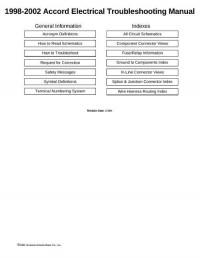
Руководство на английском языке по ремонту электрооборудования Honda Accord 1998-2002 годов выпуска.
- Автор: —
- Издательство: Honda Motor Co., Ltd.
- Год издания: 2002
- Страниц: 611
- Формат: PDF
- Размер: 19,0 Mb

Руководство на английском языке по техническому обслуживанию и ремонту Honda Accord 1989-1991 годов выпуска.
- Автор: —
- Издательство: Honda Motor Co., Ltd.
- Год издания: 1989
- Страниц: 1020
- Формат: PDF
- Размер: 33,0 Mb

Руководство на английском языке по ремонту и техническому обслуживанию автомобилей Acura Legend и Honda Accord 1991-1995 годов выпуска.
- Автор: —
- Издательство: Motorist
- Год издания: —
- Страниц: 1371
- Формат: —
- Размер: —

Руководство на английском языке по техническому обслуживанию и ремонту Honda Accord 1993-1996 годов выпуска в кузове CC7.
- Автор: —
- Издательство: Honda Motor Co., Ltd.
- Год издания: 1993
- Страниц: 1225
- Формат: PDF
- Размер: 38,2 Mb

Мультимедийное руководство на английском языке по техническому обслуживанию и ремонту Honda Accord 1998-2000 годов выпуска.
- Автор: —
- Издательство: Honda Motor Co., Ltd.
- Год издания: —
- Страниц: —
- Формат: ISO
- Размер: 229,7 Mb
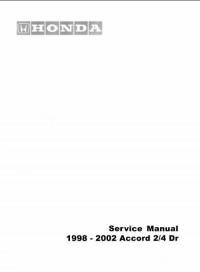
Руководство на английском языке по техническому обслуживанию и ремонту Honda Accord и Honda Accord Coupe 1998-2002 годов выпуска.
- Автор: —
- Издательство: Honda Motor Co., Ltd.
- Год издания: —
- Страниц: 2520
- Формат: PDF
- Размер: 125,7 Mb
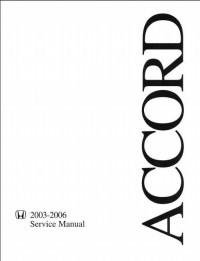
Руководство на английском языке по техническому обслуживанию и ремонту Honda Accord 2003-2006 годов выпуска.
- Автор: —
- Издательство: Honda Motor Co., Ltd.
- Год издания: —
- Страниц: 3980
- Формат: PDF
- Размер: 198,6 Mb
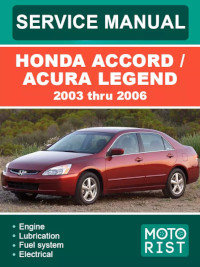
Руководство на английском языке по ремонту и техническому обслуживанию автомобилей Acura Legend и Honda Accord 2003-2006 годов выпуска.
- Автор: —
- Издательство: Motorist
- Год издания: —
- Страниц: 3965
- Формат: —
- Размер: —

Руководство на английском языке по техническому обслуживанию и ремонту Honda Accord 2008-2009 годов выпуска.
- Автор: —
- Издательство: Honda Motor Co., Ltd.
- Год издания: 2008
- Страниц: 2944
- Формат: PDF
- Размер: 88,6 Mb
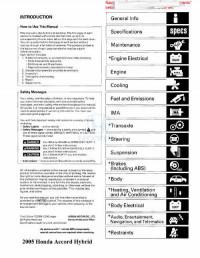
Руководство на английском языке по техническому обслуживанию и ремонту Honda Accord Hybrid 2005 года выпуска.
- Автор: —
- Издательство: Honda Motor Co., Ltd.
- Год издания: 2004
- Страниц: 2282
- Формат: PDF
- Размер: 55,8 Mb
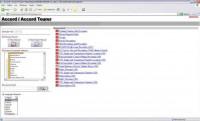
Мультимедийное руководство по техническому обслуживанию и ремонту Honda Accord и Honda Accord Tourer с 2003 года выпуска. Многоязычный интерфейс (русского нет).
- Автор: —
- Издательство: Honda Motor Co., Ltd.
- Год издания: —
- Страниц: —
- Формат: ISO
- Размер: 29,3 Mb

Руководство на английском языке по техническому обслуживанию и ремонту Honda Accord 1986-1989 годов выпуска.
- Автор: —
- Издательство: Honda Motor Co., Ltd.
- Год издания: 1989
- Страниц: 1711
- Формат: PDF
- Размер: 56,9 Mb
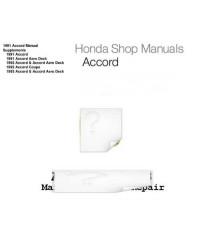
Руководство на английском языке по техническому обслуживанию и ремонту Honda Accord 1991-1993 годов выпуска.
- Автор: —
- Издательство: Honda Motor Co., Ltd.
- Год издания: —
- Страниц: 1925
- Формат: PDF
- Размер: 58,2 Mb

Руководство на английском языке по техническому обслуживанию и ремонту Honda Accord Aero Deck 1994 года выпуска.
- Автор: —
- Издательство: Honda Motor Co., Ltd.
- Год издания: 1994
- Страниц: 234
- Формат: PDF
- Размер: 7,3 Mb

Руководство на английском языке по техническому обслуживанию и ремонту Honda Accord Coupe 1994-1997 годов выпуска.
- Автор: —
- Издательство: Honda Motor Co., Ltd.
- Год издания: 1994
- Страниц: 1379
- Формат: PDF
- Размер: 44,1 Mb
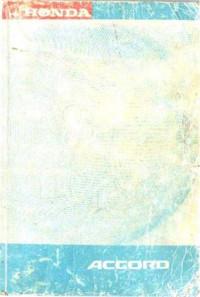
Руководство по эксплуатации Honda Accord 1989-1993 годов выпуска.
- Автор: —
- Издательство: —
- Год издания: —
- Страниц: 242
- Формат: DOC
- Размер: 3,7 Mb
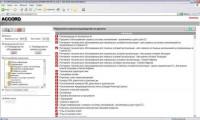
Мультимедийное руководство по техническому обслуживанию и ремонту Honda Accord с 2009 года выпуска.
- Автор: —
- Издательство: Honda Motor Co., Ltd.
- Год издания: —
- Страниц: —
- Формат: ISO
- Размер: 40,9 Mb
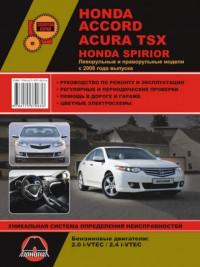
Руководство по эксплуатации и ремонту Honda Accord, Honda Spirior и Acura TSX с 2008 года выпуска с бензиновыми двигателями объемом 2,0/2,4 л.
- Автор: —
- Издательство: Монолит
- Год издания: —
- Страниц: 586
- Формат: —
- Размер: —

Руководство по эксплуатации Honda Accord VII 2002-2008 годов выпуска.
- Автор: —
- Издательство: Honda Motor Co., Ltd.
- Год издания: —
- Страниц: 509
- Формат: PDF
- Размер: 6,2 Mb
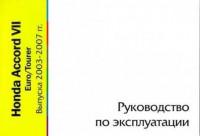
Руководство по эксплуатации Honda Accord VII 2003-2007 года выпуска.
- Автор: —
- Издательство: MoToR
- Год издания: —
- Страниц: 512
- Формат: —
- Размер: —
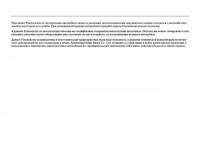
Руководство по эксплуатации Honda Accord 2008-2013 годов выпуска.
- Автор: —
- Издательство: Honda Motor Co., Ltd.
- Год издания: —
- Страниц: 513
- Формат: PDF
- Размер: 11,3 Mb
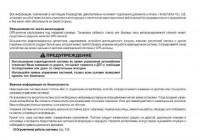
Руководство по эксплуатации навигационной системы Honda Crosstour и Honda Accord.
- Автор: —
- Издательство: Honda Motor Co., Ltd.
- Год издания: —
- Страниц: 130
- Формат: PDF
- Размер: 5,4 Mb
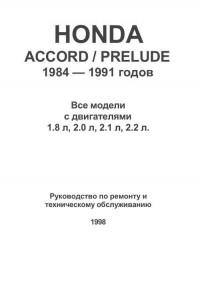
Руководство по эксплуатации, техническому обслуживанию и ремонту Honda Accord и Honda Prelude 1984-1991 годов выпуска с бензиновыми двигателями.
- Автор: —
- Издательство: РВС
- Год издания: 1998
- Страниц: 319 (отсутствуют стр. 240-366)
- Формат: PDF
- Размер: 60,0 Mb

Руководство по эксплуатации, техническому обслуживанию и ремонту Honda Accord 2002-2008 годов выпуска с бензиновыми двигателями объемом 2,0/2,4 л.
- Автор: —
- Издательство: Арго-Авто
- Год издания: —
- Страниц: 440
- Формат: —
- Размер: —
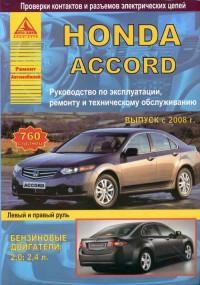
Руководство по эксплуатации, техническому обслуживанию и ремонту Honda Accord с 2008 года выпуска с бензиновыми двигателями объемом 2,0/2,4 л.
- Автор: —
- Издательство: Арго-Авто
- Год издания: —
- Страниц: 760
- Формат: —
- Размер: —

Руководство по эксплуатации, техническому обслуживанию и ремонту Honda Accord с 2003 года выпуска.
- Автор: —
- Издательство: Делия
- Год издания: —
- Страниц: 472
- Формат: —
- Размер: —

Руководство по техническому обслуживанию и ремонту Honda Accord с 2008 года выпуска с бензиновыми двигателями объемом 2,0/2,4 л.
- Автор: —
- Издательство: Легион-Автодата
- Год издания: —
- Страниц: 520
- Формат: —
- Размер: —

Мультимедийное руководство по техническому обслуживанию и ремонту Honda Accord 1998-1999 годов выпуска.
- Автор: —
- Издательство: —
- Год издания: —
- Страниц: —
- Формат: ISO
- Размер: 107,5 Mb
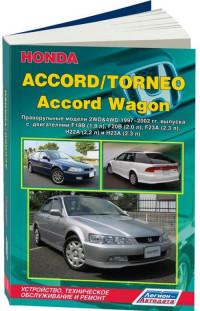
Руководство по техническому обслуживанию и ремонту Honda Accord/Accord Wagon и Honda Torneo с правым рулем 1997-2002 годов выпуска с бензиновыми двигателями.
- Автор: —
- Издательство: Легион-Автодата
- Год издания: —
- Страниц: 392
- Формат: —
- Размер: —
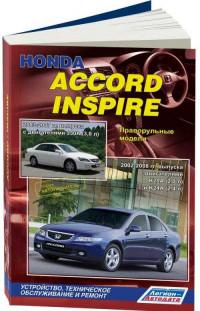
Руководство по техническому обслуживанию и ремонту Honda Accord и Honda Inspire с правым рулем 2002-2008 годов выпуска с бензиновыми двигателями объемом 2,0/2,4 л.
- Автор: —
- Издательство: Легион-Автодата
- Год издания: 2012
- Страниц: 456
- Формат: —
- Размер: —
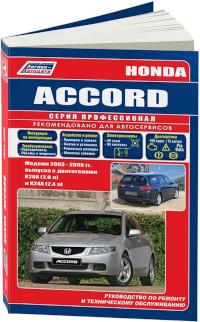
Руководство по техническому обслуживанию и ремонту Honda Accord 2003-2008 годов выпуска с бензиновыми двигателями объемом 2,0/2,4 л.
- Автор: —
- Издательство: Легион-Автодата
- Год издания: —
- Страниц: 432
- Формат: —
- Размер: —
Привет Всем
Решил для удобства собрать все интересные документы на ЯДиске и заодно поделиться ими со Всеми.
Итак:
Honda Accord 94-97 Coupe кузова CD-5, CD-7 американки, моторы F20b3, F22B3, F22B5
Accord CC7 в догонку верхнему, различия минимальны
Accord Aerodeck 1994-1995 Вагоны 5-го поколения, Америка, левый руль. Мануал содержит все электросхемы, которые есть в авто.
Accord Torneo 6 Русскоязычный мануал, есть косяки! Моторы F20b SOHC DOHC H23a H22a
Accord 6 АмерикаCF8, CG3,5,6 F23 2500+ страниц:)
Ремкомплект пальца дверных петель полезно тем, у кого просели двери. Подходит на 5-6 поколение, но это не точно
Модификация и тюнинг двигателя на примере Lancia Очень редкая литература, в свое время искал ее пару дней. Имеет очень много интересных вещей, используемых а автоспорте
Постараюсь по возможности пополнять список 
Спасибки и удачи всем
- 36714
Руководство по ремонту Honda Accord c 1993 — 1996
Двигатели Honda Accord — бензиновые, шестнадцатиклапанные: Р4 1,8 л 92 кВт/125 л. с.; 2,0 л F20Z2 85 кВт/115 л. с.,F20Z1 96 кВт/131 л. с.,F20B 99 кВт/135 л. с. и F20B3 100 кВт/136 л. с.; 2,2 л 96 кВт/130 л. с., 97 кВт/132 л. с.,F22B1 107 кВт/146 л. с., 108 кВт/147 л. с.,F22B5 110 кВт/150 л. с. и 140 кВт/190 л. с.; 2,3 л 116 кВт/158 л. с.; V6 2,7 л 127 кВт/172 л. с
Описание:
Автор: Honda
Формат: pdf (в архиве RAR)
Размер: 43 мб
Добавлять комментарии могут только зарегистрированные пользователи.
[
Регистрация
|
Вход
]




















































